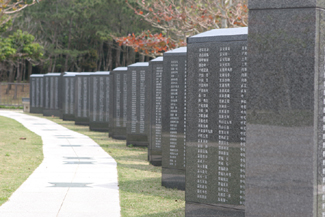TCCOR 4: Destructive winds of 50 knots or greater are possible within 72 hours. TCCOR 4 will be continuously in effect as a minimum condition of readiness from 1 June to 30 November annually. Now is the time to stock-up on food and Typhoon Supplies.
TCCOR 3: Destructive winds of 50 knots or greater are possible within 48 hours. Initiate a general cleanup around homes and office.
TCCOR 2: Destructive winds of 50 knots or greater are anticipated within 24 hours. Remove or secure all outside items.
TCCOR 1: Destructive winds of 50 knots or greater are anticipated within 12 hours. No school for DoDDS students. Staff and teachers will work normal hours, unless changed by DoDDS superintendent. Fill any containers you can use for water storage. If you live in low lying quarters, make arrangements to stay with a friend. Make final check of food and other supplies.
TCCOR 1 Caution: Destructive winds of 50 knots or greater are anticipated within 12 hours. Actual winds are 34-49 knots. All nonessential personnel will be released to their quarters at this time. DoDDS schools will close at this time. Staff and teachers return home or remain home. Base exchange, shops, Commissary, Shoppettes, Gas Station, Services facilities, Clubs, Restaurants, Recreational Facilities and Post Office will close. Movement about the base should be kept to a minimum. SFS will enforce "essential vehicles only"policy.(Reference Base O-Plan 32-1 "Base Disaster Operations Plan)
TCCOR 1 Emergency: Actual winds of 50 knots or greater. All outside activity is prohibited.
TCCOR 1 Recovery: Destructive winds of 50 knots are no longer occurring. Actual winds are 34-49 knots. Nonessential functions remain closed unless directed by the commander. All but emergency essential personnel remain in their quarters.
Storm Watch: The typhoon is moving away but the base is still feeling some effects. Hazardous conditions may exist due to storm damage. In some cases the storm could return to Okinawa, so stay alert. All military and civilian personnel will return to work within 2 hours or at normal duty hours unless otherwise instructed by their commander. The Commissary and BX will resume operations, unless directed otherwise by the installation commander.
All Clear: Hazardous conditions and winds are no longer present. Return to normal duties. All Clear is announced when all hazards have been cleared. DoDDS teachers, staff and students will return to school during normal hours. From June 1st to November 30th Okinawa will return to TCCOR 4.
NOTE: The wind speeds shown above for each TCCOR serve as a guide for decision making. The final decision on TCCOR declaration rests with the Commander, 18th Wing based on wind speed, weather forecast, safety and operational and mission concerns.
Source: Okinawa Area Coordinator Joint Standing Operating Procedure (JSOP) for Natural Disasters










